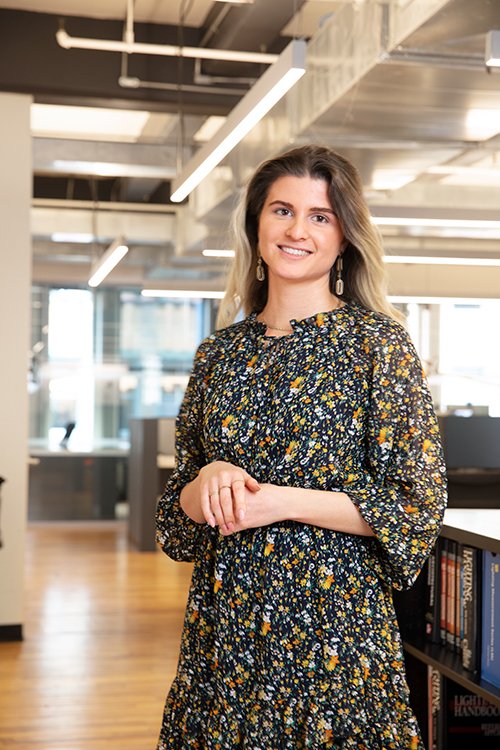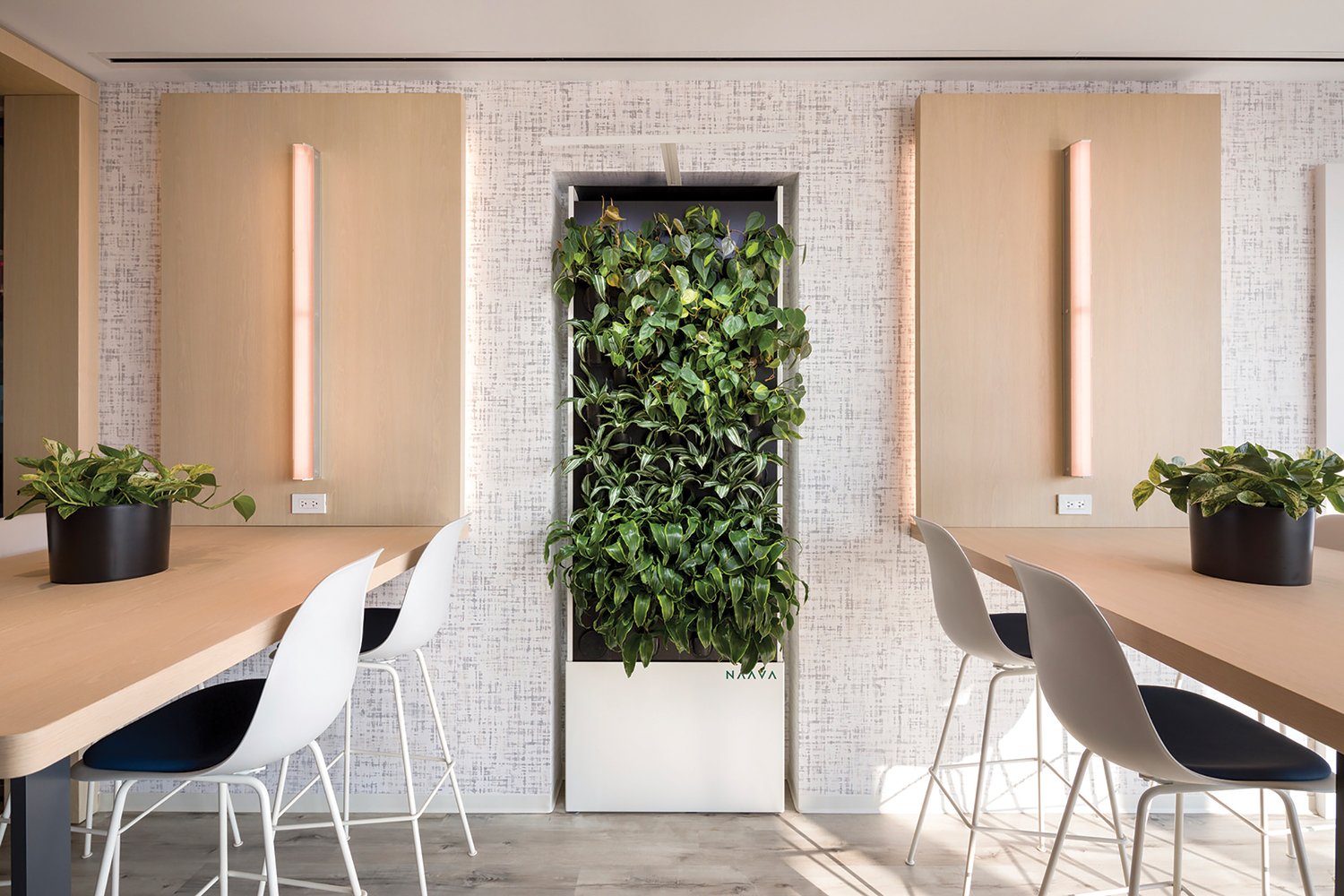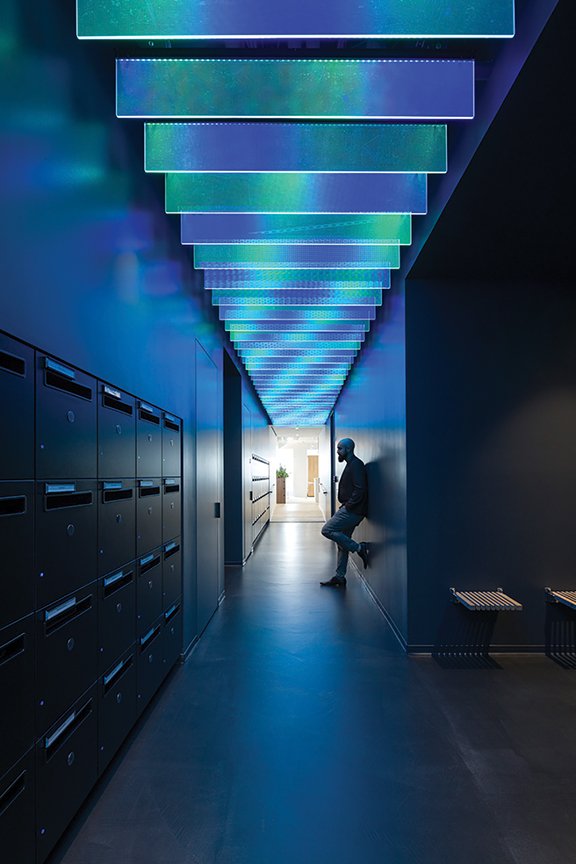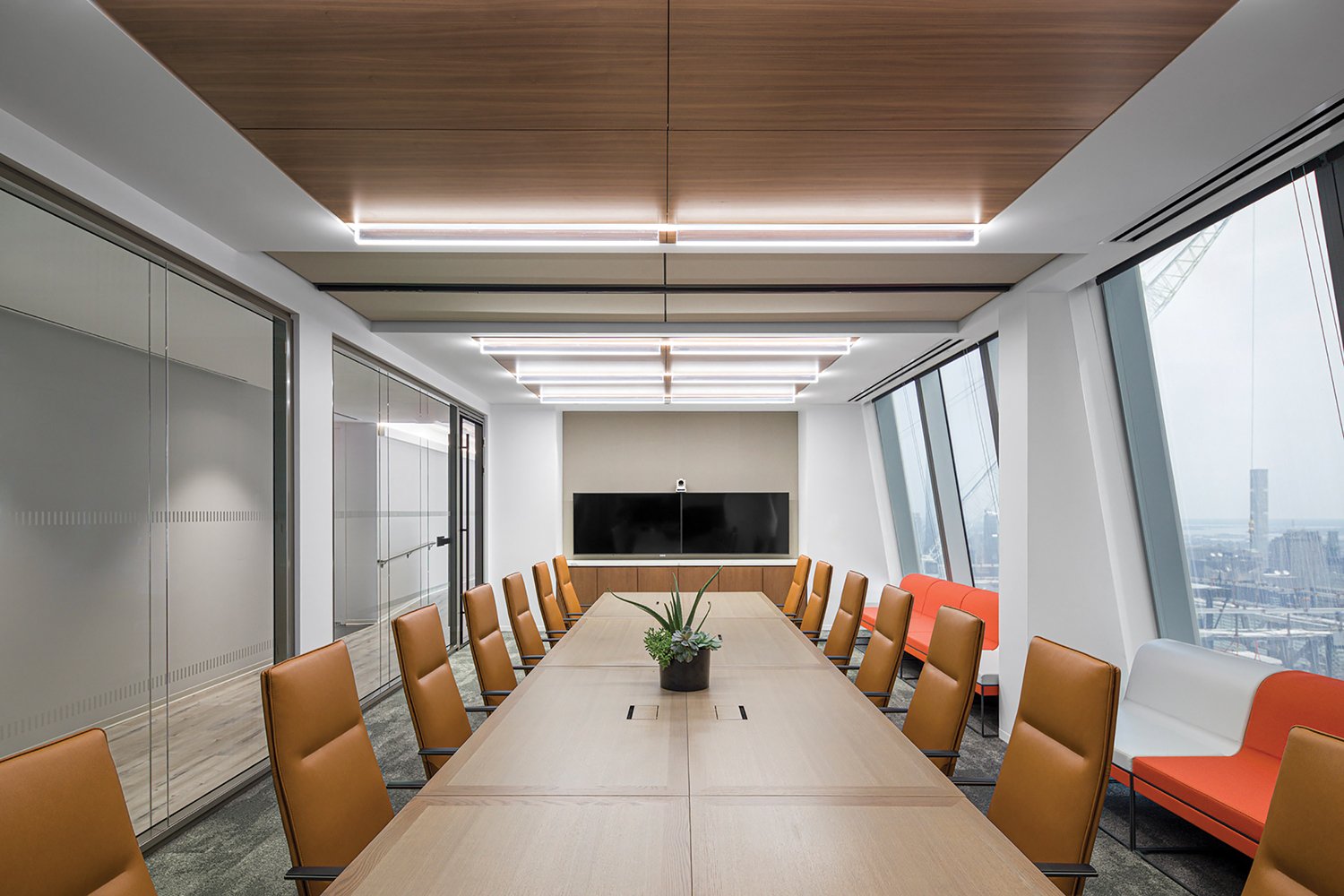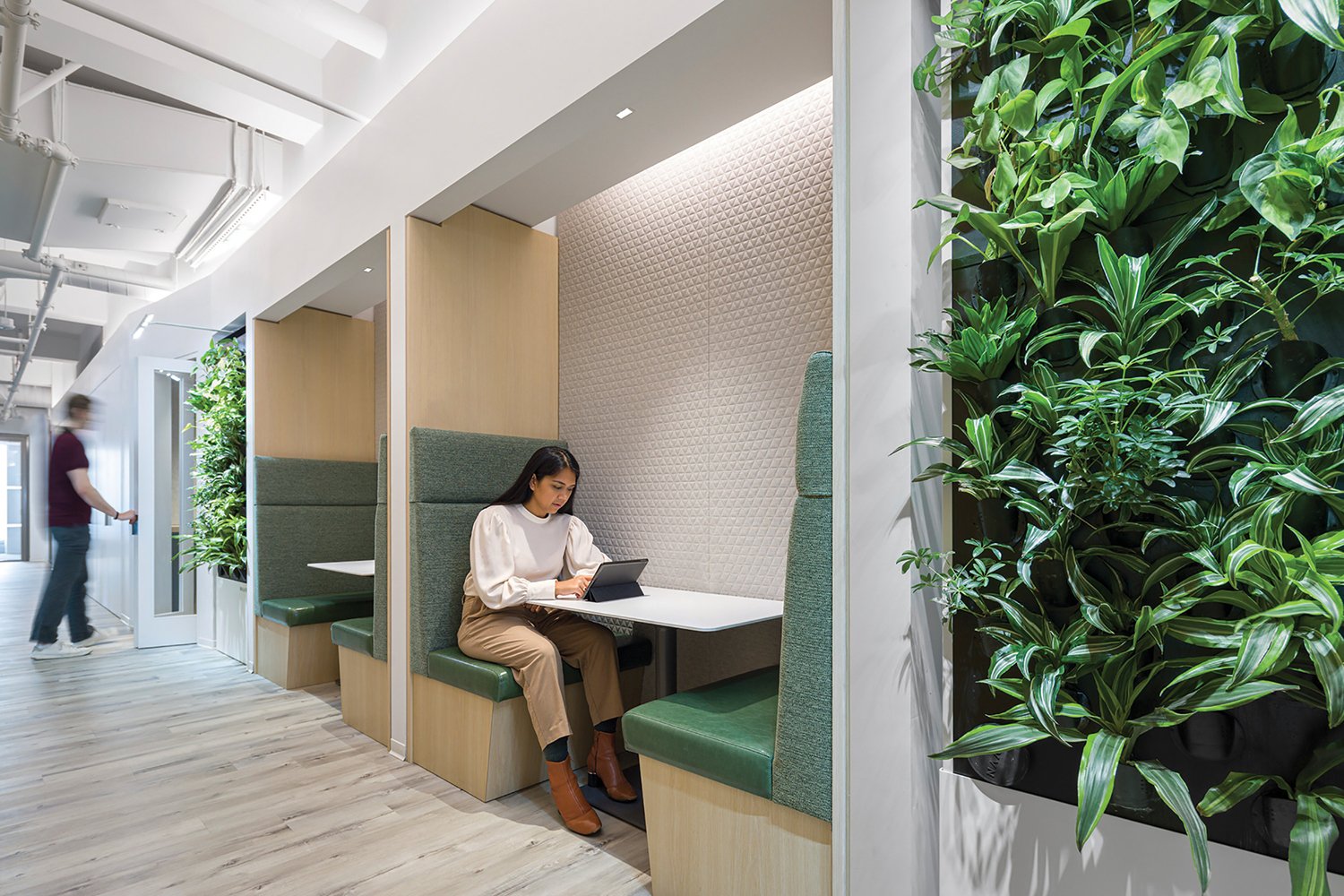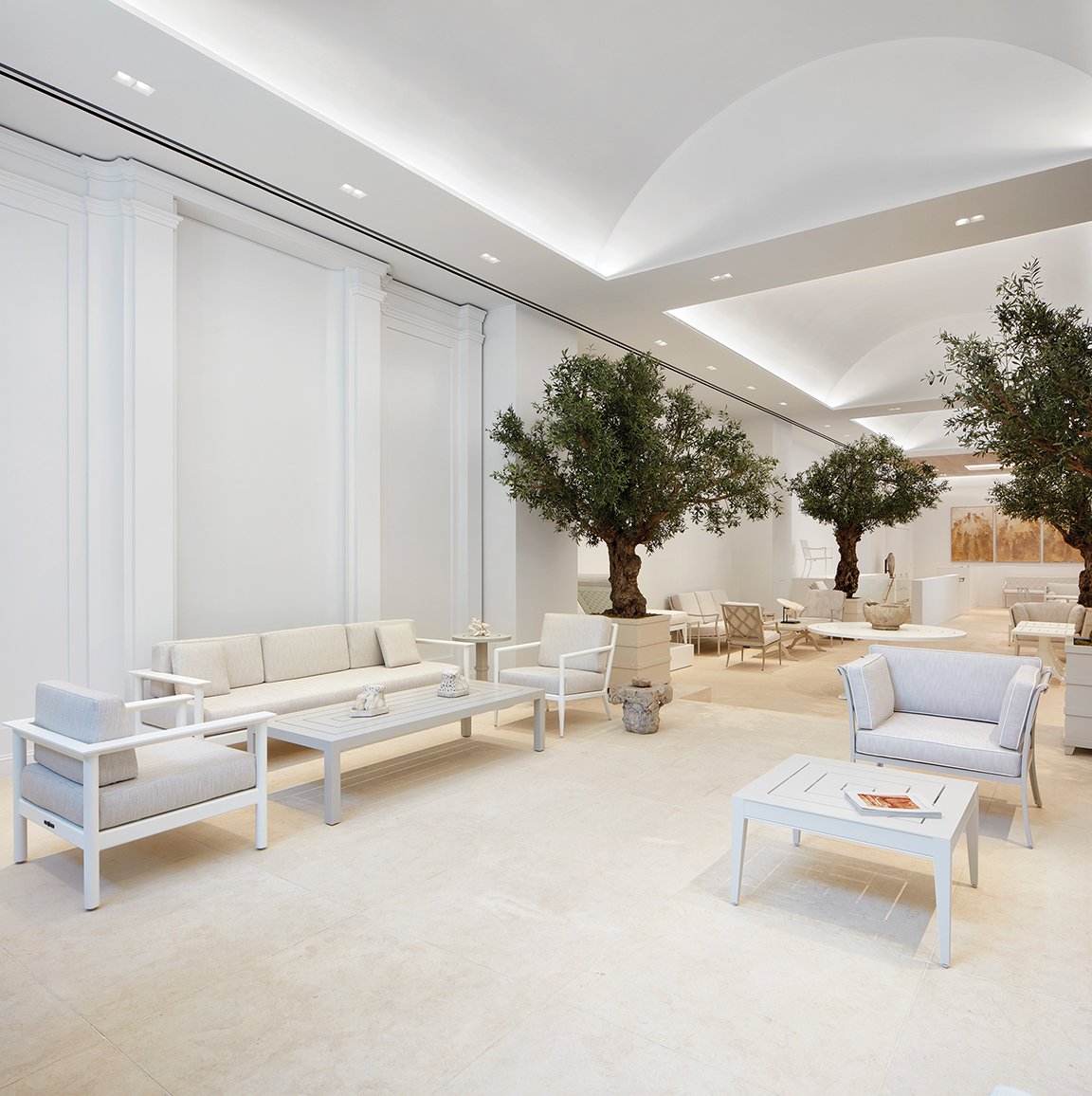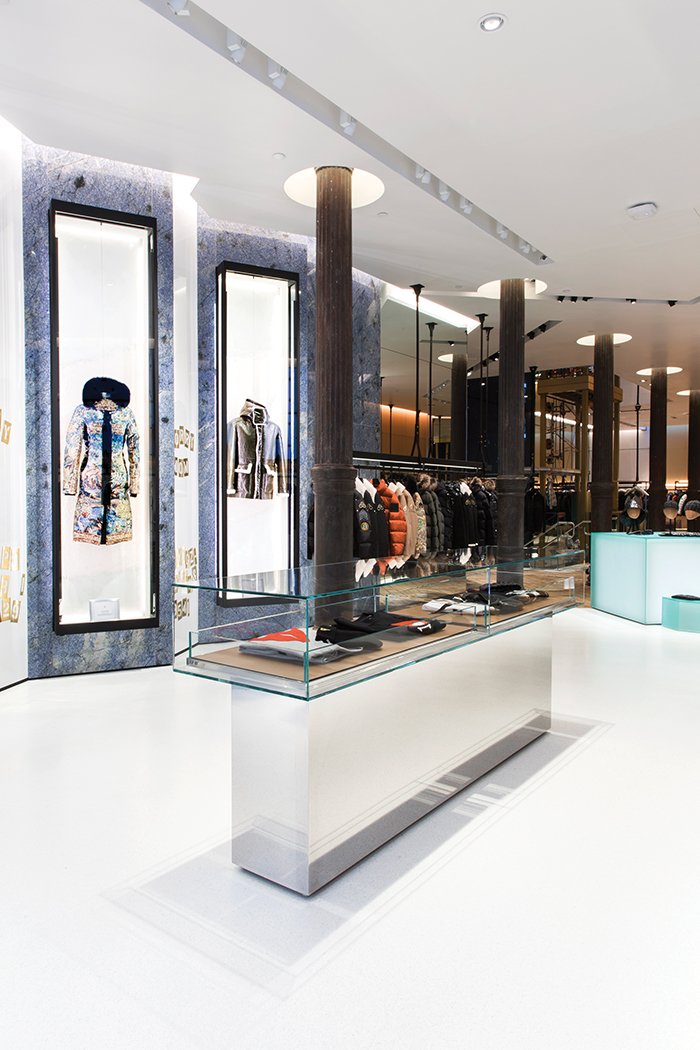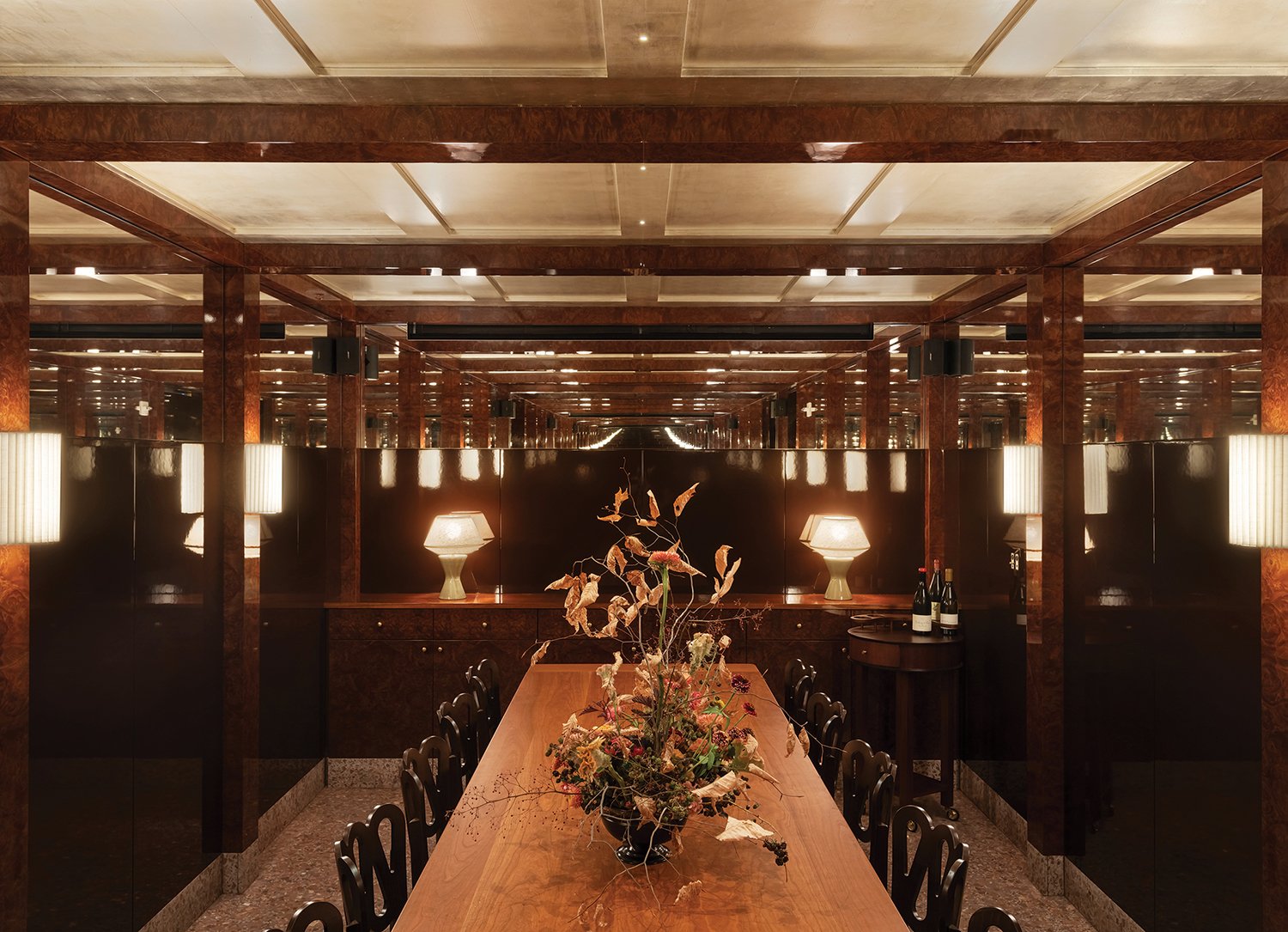Illuminating a Demand
Three MPSL Alumni & Program Director Shaun Fillion on the Growing Need for Lighting Designers
The New York School of Interior Design’s one-year, post-professional Master of Professional Studies in Lighting Design (MPSL) has a 100 percent employment rate for graduates within 6 months of the program’s completion, and has for years. This is not an extraordinary statistic for NYSID: Post-graduation employment rates are high for all of the College’s degree programs. What’s notable about the outcomes for the MPSL is that the majority of its graduates are getting multiple offers. MPSL Program Director Shaun Fillion, LC, CLCP, Educator IALD, says a surge in the demand for lighting designers is behind these great outcomes. Fillion, as well as alumni Estefania Diaz ’15 (MPSL) / ’16 (MPSS), Lighting Designer at Ventresca Lighting Designers; Iliana Filotheidi ’19 (MPSL), Senior Lighting Designer at HLB Lighting Design; and Diogo Coelho ’18 (MPSL), Lighting Product Manager at Amerlux, share their insights.
“Light is a storytelling medium,” says Shaun Fillion, director of lighting design at RAB Lighting, and program director for NYSID’s MPSL since 2008. “Architectural lighting design is a chance to take a built environment and manipulate it over time. . . to tell a story, not about journeying through the space, but rather how the space changes over time, from day to night. Everything now is dimmable, many fixtures can change color, so we are creating scenes that shift over the course of a day to increase the enjoyment and well-being of the users.” Fillion would be the first to tell you that the impressionistic and human-centered art form of lighting design is made possible by a deep technical knowledge, and this has never been more true than today, as LED technology and energy codes grow more complicated.
Fillion, a lighting industry leader who chairs the IES (Illuminating Engineering Society) Progress Committee, says there has been a surge in the demand for lighting professionals of every kind in recent years, and he’s not the only one talking about it. In a 2023 Lighting Jobs Outlook roundtable hosted by the Pompeo Group, Rachel Gibney, managing principal of specification sales for Chicago Lightworks, said, “All positions are going to be in high demand.”
“The lighting industry has been growing, especially the design section of the industry. Some of this is driven by how complex the industry has gotten,” says Fillion. “Energy codes required by states have pushed architects and engineers to the point of bringing in lighting designers to help bring their projects to fruition. Historically lighting design was a luxury, something that would only be integrated into a very fancy building. But as lighting codes and controls get more complex, lighting designers are in demand for all types of buildings.” Fillion notes not only that architectural lighting design firms are growing and adding staff, such as the recent expansion of the US firm HLB Lighting Design to Dubai, but also that lighting engineering firms have started to build internal lighting design teams, as is the case with AKF’s Lightcraft, BR+A’s Borealis Lighting Studio, Arup, and Cosentini. Manufacturers are also hiring lighting designers, who are using their knowledge to shape luminaires and make them function more artfully.
The demand for specialized knowledge in lighting design at every level of the building industry is such that NYSID is developing a lighting design minor within its BFA program in Interior Design. The objective is to make NYSID graduates as multifaceted and marketable as possible. The minor is slated to become available to undergraduates in 2025.
The New York School of Interior Design offers the MPSL in New York City, and an entirely online MPSLD (digital) program, which can be experienced from anywhere. Fillion notes that the goals of the students in the in-person and online programs tend to be slightly different. Many of the remote learners are interested in starting their own lighting firms, such as the burgeoning Tennessee-based L+Arc Lighting Design, co-founded by two NYSID MPSL alumni, Bobby Bradley ’21 and Dianna Osickey ’21. The in-person students, however, are almost all focused on careers with the many world-renowned lighting firms in greater New York City. We talked with three lighting designers who came to New York for the program and are now thriving.
Iliana Filotheidi. Photo: Matthew Septimus
Iliana Filotheidi ’19 (MPSL)
Senior Lighting Designer, HLB Lighting Design
When Iliana Filotheidi was a student in the MPSL at NYSID in 2019, Shaun Fillion took her, along with her cohort in the program, to meet the managers and principals of a variety of lighting design firms in the greater New York City area. This was not a part of a class. This was something extra that Fillion does for his students to open doors. She says, “Shaun is more than an instructor. He’s an inspiration and a mentor.”
Filotheidi began investigating the MPSL program while she was working as a junior architect at the firm Hill West Architects in 2018. In her work, she’d observed that “architecture can’t come to fruition without lighting.” She’s also noticed, “With architecture, you shape the experience. With lighting, you play with emotions.” Architecture had been her mother’s career, and she grew up with a similar passion but realized that architecture didn’t complete her. Filotheidi, a native of Greece, had the talent to be an architect, but lighting design called to her. She researched options and found the NYSID program. She switched her work visa to a student visa and “went for it,” but she felt anxiety about making such a big change. “I was a practicing architect, and completely switching careers brings up a lot of feelings, which Shaun helped me through,” she remembers.
When Fillion took her and other students around to lighting design offices around the city, she grew excited about her prospects. She got multiple business cards from principals. One of those business cards helped her land her first internship opportunity in lighting design. Another card was from HLB. On that visit to the HLB office, she’d had an opportunity to meet Senior Principal Ken Douglas and Principals Lee Brandt and Faith E. Baum. She’d instantly loved the energy of the company. She was able to express her interest to Douglas since she had his business card, went through the application process, and got the position. It probably didn’t hurt that she graduated as NYSID’s Chairman’s Award Winner for the MPSL in 2019.
Filotheidi has already been promoted to senior lighting designer at HLB, which means she is able to take the lead on many of the lighting projects she’s assigned. She says “Our courses really prepared us. I didn’t see a huge gap between school and professional projects.” A recent project she adored working on was the Norwegian bank DNB’s offices in Hudson Yards. HLB’s client was the architecture firm on the project, M Moser Associates. She worked under the auspices of Project Manager Adam Kroll from M Moser and Principal-in-Charge Lee Brandt, her principal at HLB. The office was designed to be collaborative, and each space had different lighting requirements depending on the behaviors the team wanted to encourage. She also needed to strictly adhere to WELL Platinum and LEED Gold certification standards.
Filotheidi has a passion for biomimicry (design that mimics patterns in nature). So when the architect asked her team to create the dramatic experience of gazing up at the Northern Lights in a long corridor outside the elevator, she was excited. She and her team created a pattern of blue and green light on acrylic panels. “One of the wonderful things about this space is that it’s mutable. They asked us to create different moods with different lighting options.”
The requirements for other spaces in the DNB offices were different. In a social hub with greenery on the way to the lounge area, the architect wanted people to come together for intimate conversation, so the team used vertical sconces of textured metal to “bring the eye to the level of human beings,” says Filotheidi.
Filotheidi says there is a lot of documentation, adherence to rules, and budgetary consideration in her designs, but these constraints can sometimes make her work more creative. She approaches lighting with a naturalist’s eye. She says, “With lighting, we also need shadows. The dark side is part of the lighting design.”
Estefania Diaz ’15 (MPSL) / ’16 (MPSS)
Lighting Designer, Ventresca Lighting Designers, LLC
Estefania Diaz. Photo: Matthew Septimus
When lighting design is well done, you don’t notice the lighting,” says Estefania Diaz, ’15 (MPSL) / ’16 (MPSS), a lighting designer at the architectural lighting firm Ventresca Lighting Designers, headquartered in Long Island City, NY. “It causes you to feel and respond, but not in a way that’s obvious.” One of the things Diaz loves the most about her job at Ventresca is the variety of projects she’s tasked with, because the firm works in the retail, hospitality, and high-end residential sectors. It was a smaller company when she started in 2016, but it’s growing and winning contracts to work with many prominent brands. Some of the exciting projects she’s worked on have been the McKinnon and Harris showroom (with architecture firm Two Street Studio), the award-winning Moose Knuckles flagship Soho store (with O’Neil Langan Architects), and Le Rock restaurant (with architecture firm Workstead).
Diaz says the most important thing to understand about the work of a lighting designer is that it’s technical knowledge that makes the art form possible. “At Ventresca, we are technical but also very artistic,” she says. “It’s the technical aspect that allows us to create such beautiful spaces.” For their work on Le Rock, her team collaborated closely with the interior designer to evoke and highlight the Art Deco surroundings of Rockefeller Center. They proposed soft, warm, ambient illumination, using a lot of accent lighting like sconces. Diaz’s role was “to work on the lighting plan and zone schedule, which is crucial in a lighting project.”
Diaz got her undergraduate degree in interior design in Ecuador, where she was born and raised. She began her career in visual merchandising and store design for a major department store chain in her home country. As she flew all over the country designing stores, she developed the opinion that lighting was the most powerful component of retail design. She wanted to expand her knowledge of lighting design, and coming to New York had always been her dream.
She looked at many programs and settled on the MPSL at NYSID. One of the things that attracted her to NYSID’s program was the international makeup of the cohort. She says, “A very global community forces you to open your eyes to new things, and this feeds design.” She also liked the program’s one-year duration. She adds, “I was already a professional, so I wanted to get the knowledge quickly and hit the ground running in my career.” She says, “It was a really complete program, and I am still using all the knowledge I learned there. . . from the science of lighting, that is, how we see light in our brains and eyes, to technical and presentation techniques.” She remembers Lighting Design Studio I as her favorite course: “In that amazing classroom, they have all of these controls and you are really free to experiment with beam spread, CCT (correlated color temperature), everything. You are allowed to fail and learn from it. This is so important.”
Diaz did hit the ground running in her new lighting design career. Even before she finished the MPSL program, she got an internship at Ventresca. She says, “I had multiple offers for internships. The school helped me vet the offers. The professors know the companies and helped me choose what option was the best for me.”
Diaz laughs at the memory of how eager she was to finish her first post-professional master’s degree in a short time, because soon after she started working at Ventresca, she began to think about how much she would also like to have the MPS in Sustainable Interior Environments from NYSID. She attended NYSID’s MPSS program in 2016, the year after she graduated from the MPSL. She recalls, “My family was always very conscious of our impact on the environment. So for me, implementing the sustainability aspect in my lighting design career was important. We have to create designs that are better for the environment and better for people living in them.” Energy conservation is a principle she brings to every lighting project at Ventresca. She says, “One tactic to save energy is using daylight savings controls to create different zones with the lighting. With these controls, the lights dim and/or turn off automatically in the presence of daylight and we waste less energy.”
Diaz notes that LED technologies are evolving and getting increasingly sophisticated. She says, “There are warm beam controls that allow you to dim to a warmer color. There are small fixtures that allow you to hide the light source. Even as the size gets smaller, the performance of LEDs is getting better, offering better lumen coverage, less energy consumption, and longer life. There are so many options, and you have to understand them all to pick the right products for your application.”
She believes the increasing complexity of both lighting technology and building industry codes is driving the demand for lighting specialists. “There are so many rules we have to follow to make our lighting design compliant with the codes, and the architects we work with trust in our knowledge to get it right,” she explains. “The technical aspect of lighting is what differentiates a lighting designer from an interior designer or an architect. Of course, as interior designers we learn how to use lighting in space, but a lighting designer has to know the regulations that vary from state to state. We must be able to do something as specific as using a predictive photometric program (AGi32) to document that the emergency lighting will be sufficient.” She concludes, “The beauty we create could not happen without a foundation of technical knowledge.”
Diogo Coelho ’18 (MPSL)
Product Manager at Amerlux
Diogo Coelho. Photo: Matthew Septimus
Diogo Coelho’s progression in his design career has not been predictable, and he wouldn’t have it any other way. Originally from Portugal, he was working as an interior designer and product designer at a custom window manufacturer called Deleme Janelas in Lisbon, when he fell in love with the American who would become his wife. “What drove me to get a post-professional degree in lighting at NYSID was love,” he recalls. He had already obtained a bachelor’s degree in Interior and Equipment Design and a master’s degree in Equipment Design in Portugal, but he wanted to move to New York and find a program that would guarantee him strong industry connections and job prospects in the US. He and his then-girlfriend researched many post-professional programs in the US, and they were drawn to the strong job placement statistics of NYSID’s MPSL program. As a designer of custom windows, Diogo had spent many hours talking with customers about daylight. He says, “As window designers and manufacturers, we knew we could not control daylight, but we could harness it. So I went for the MPSL to understand more about these intersections.”
Coelho says NYSID’s MPSL program exceeded his expectations. “NYSID is a small school, so you tend to build really good relationships with faculty,” says Coelho, “In this case, this was with Shaun Fillion, whom I see as a mentor. The program opened the doors to the lighting industry network. It’s a very welcoming industry.”
It’s not only the connections but the learning that Coelho found invaluable. “NYSID’s program taught me the most important tools to become the lighting designer I am today. They teach you how to work with a particular software called AGi32, so you can make photometric predictions about how your design will affect space,” Coelho says. “You put your hands on fixtures in the lighting lab so you can experiment with the distance to the wall, how glary or comfortable the light appears, and all of the other variables. You learn to communicate your ideas to clients with digital image editing programs, but also, with hand drawings.”
Coelho had multiple internship offers before he graduated. “Everybody in the program got multiple offers from lighting design firms,” he says. He went to work as a lighting designer for the architectural lighting firm Cooley Monato Studio in 2018 and worked there for four years. After the birth of his first child, and more than a year and a half into the pandemic, he reevaluated and began to think about finding a job closer to his home in New Jersey. Once again, it was love, and prioritizing his family’s needs, that drove Coelho to consider a career pivot. He sought a job as a product manager at Amerlux, a manufacturer of spec-grade lighting, which has its headquarters in Oakland, New Jersey. “Sometimes in life you have to take risks,” he muses. He took the job in May of 2022, and he finds the work “extremely exciting.”
“My background in interior design and lighting design prepared me to transition to this side of the industry,” he says. “There is a saying that the product manager is the voice of the customer, and our customer is the lighting designer!” Coelho’s job is to be something of a chief “listener”: He must engage with every department of his company—business development, engineering, sales, marketing, financial, production, and customer service—to help create a product that meets the customer’s needs at the right price point, and bring it to market. One of the things he values about his company’s culture is that it’s “the opposite of stagnant,” and his team is always evolving the product, making changes daily based on feedback from architects and lighting designers.
Work-in-progress images of Finch, the newest release from Amerlux, with a 1.25” aperture cylinder.
His major project for the past year has been overseeing and coordinating the development and release of Finch, which he calls “a very small aperture size collection,” that was just launched at LightFair, one of the major industry trade shows, in May 2023. “We built a 1.25-inch aperture and the fixture functions as a surface and recessed downlight. It puts out over 1,000 lumens, so it’s a big deal for such a small aperture,” he adds. The trends he is seeing in lighting fixture design are “things getting much smaller, more sustainable, and more adjustable.” Finch fixtures follow DfD (Design for Disassembly) standards, meaning all of the pieces can be reused and recycled. The Finch line is especially sustainable, because at the end of the LED chip’s life in about 10+ years, the client can replace the chip but continue to use the same fixture, so there is less waste. Amerlux is also working to attain a Declare label for all of its products. Declare is a label that reports all product ingredients, in compliance with the Living Building Challenge. Despite their tiny size, Finch products are manually adjustable, a feat of engineering.
Coelho believes that the high demand for lighting designers is evidence that the architecture industry is coming around to the idea that “lighting design should not be an afterthought.” He adds, “When the lighting design is synched with the architecture and interior design from the beginning, the project is always better.”

